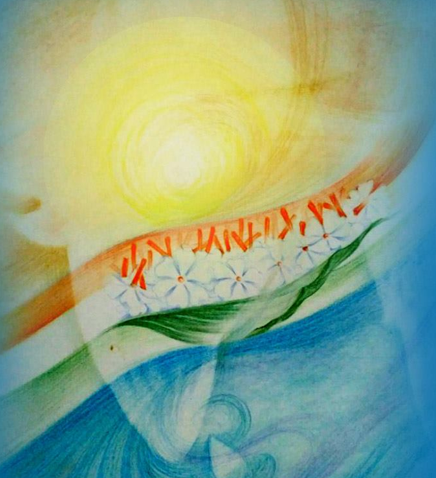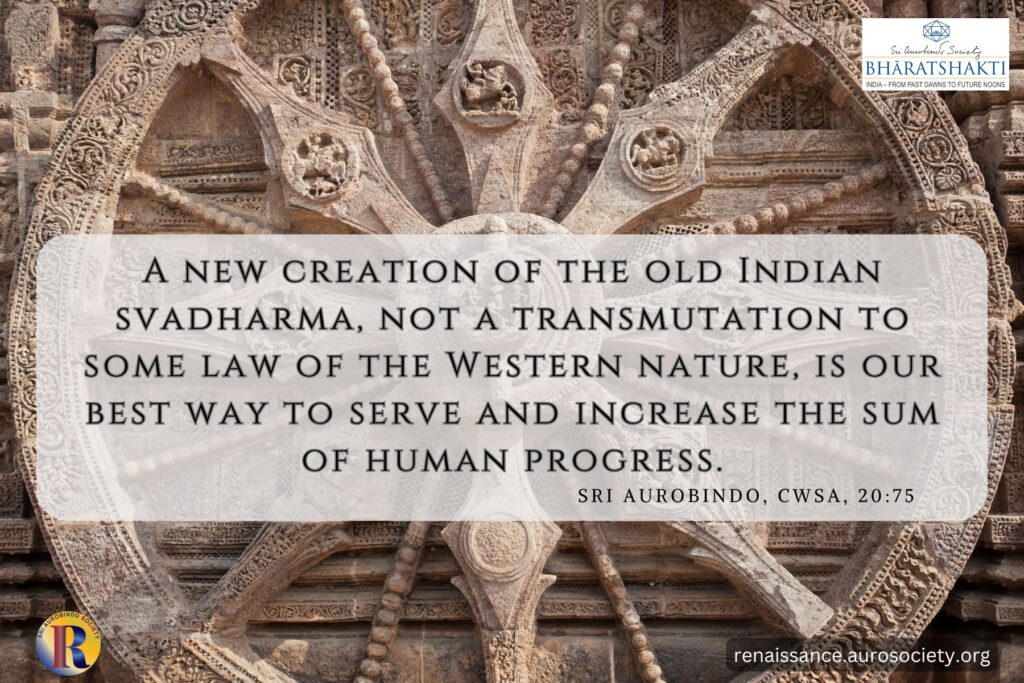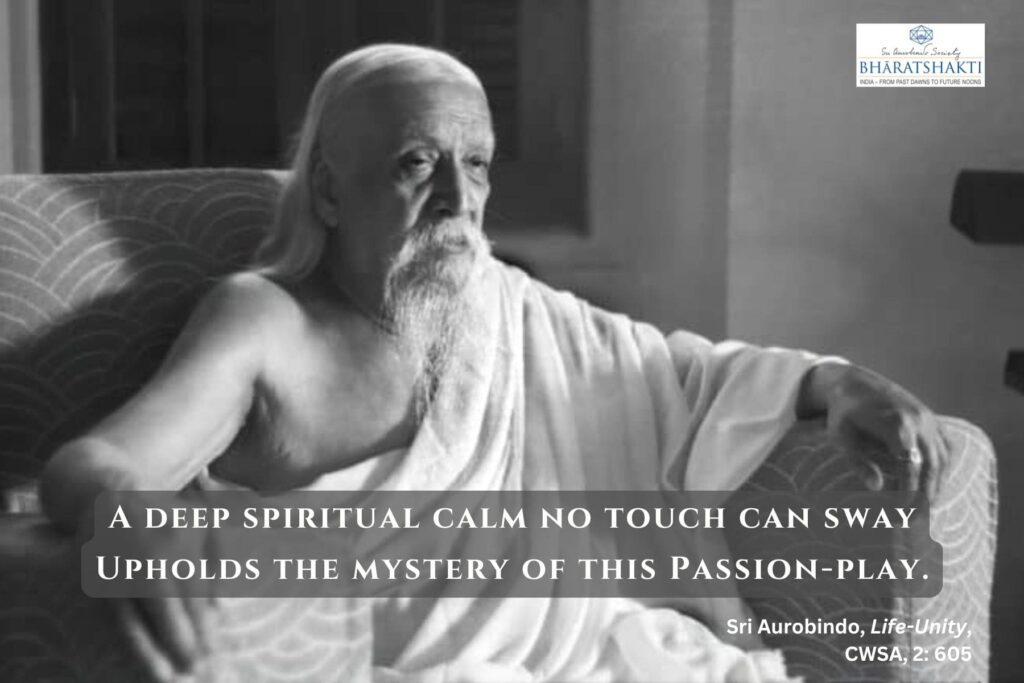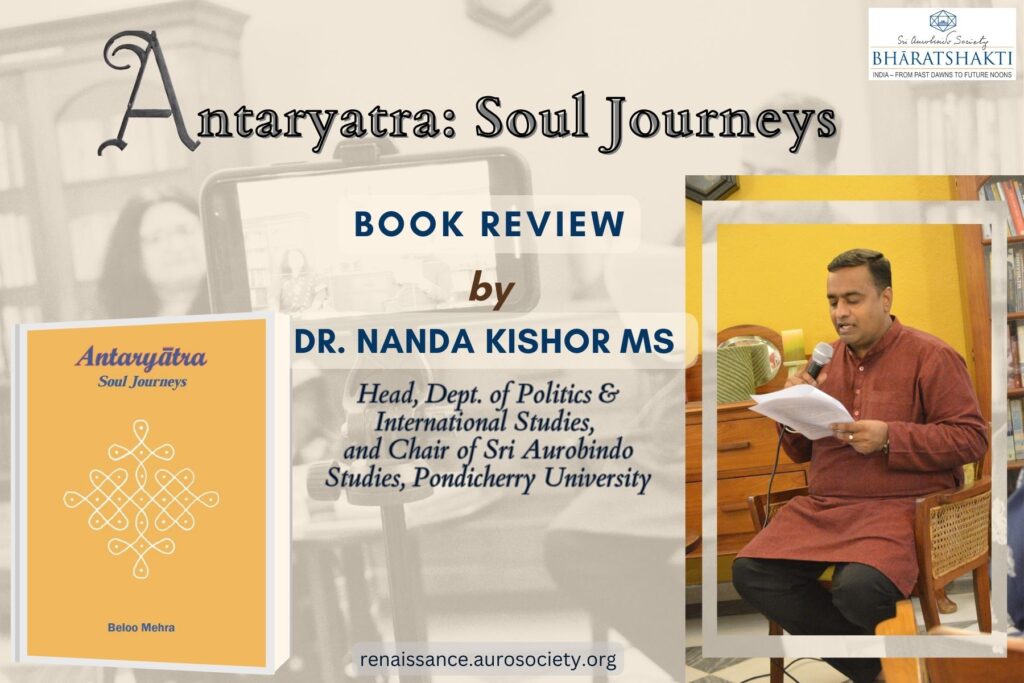Volume 1, Issue 4
Author: Agali Venkappa Sastri
Continued from Part 4
THE HISTORICAL EVOLUTION
Starting from these foundations, the socio-political evolution of Indian civilisation passed through four historical stages –
- first, the simple Aryan community;
- then in a long period of transition in which the national life was proceeding through a considerable variety of experimental formations in political structure and synthesis;
- thirdly, the definite formation of the monarchical state coordinating all the complex elements of the communal life of the people into regional and imperial unities;
- and last, the era of decline in which there was an internal arrest and stagnation and an imposition of new systems and cultures from Western Asia and Europe.
The Ancient Communal Organisation – from Village to Empire
The village community which first came into existence under agricultural and pastoral conditions remained throughout the stable unit. As society expanded and as the simple agricultural life widened into commercial, industrial, military and political and religious activities, the villages began to group themselves in tens and hundreds each under its head and needing its administrative organization.
As the clans grew into a large people by conquest or coalition with others, they became constituents of a Kingdom or a confederated republican nation and then again, the circles, mandala, of larger Kingdoms and finally of one or more great empires.
The test of the Indian genius for socio-political evolution lay in the successful application of the principle of a communal self-determined freedom and order to suit the growing development and new order of circumstances. The King at the head assisted by a council, the metropolitan assembly and the general assembly, each containing representatives of the four orders and exercising specific functions, and all obeying Dharma, “a greater sovereign than the King,” constituted the framework of administration.
Indian monarchy previous to the Mahomedan invasion was not, in spite of a certain sanctity and great authority conceded to the regal position and the personality of the king as the representative of the divine Power and the guardian of the Dharma, in any way a personal despotism or an absolutist autocracy: it had no resemblance to the ancient Persian monarchy or the monarchies of western and central Asia or the Roman imperial government or later European autocracies: it was of an altogether different type from the system of the Pathan or the Mogul emperors.
~ CWSA, Vol. 20, p. 391

The King was only a political sovereign. At no time did he or could he arrogate to himself the right of framing the social order or the political structure, – that was the work of the Rishi. The people represented in the council and the assemblies shared in the sovereignty of the King. The social hierarchy was not at the same time a political hierarchy. This saved class domination and class strife that are such a marked feature of history in the West.
A priestly theocracy, like that of Tibet, or the rule of a landed and military aristocracy that prevailed for centuries in France and England and other European countries or a mercantile oligarchy, as in Carthage and Venice, were forms of government foreign to the Indian spirit.
~ ibid, p. 411
The principle of the Indian society was the active participation of the whole body of the people in the assemblies, metropolitan and general.
…we do not find in India either that struggle between the patrician and plebeian elements of the community, the oligarchic and the democratic idea, ending in the establishment of an absolute monarchical rule, which characterises the troubled history of Greece and Rome or that cycle of successive forms evolving by a strife of classes,—first a ruling aristocracy, then replacing it by encroachment or revolution the dominance of the moneyed and professional classes, the regime of the bourgeois industrialising the society and governing and exploiting it in the name of the commons or masses and, finally, the present turn towards a rule of the proletariate of Labour,—which we see in later Europe.
~ ibid, p. 412
Political bodies like the kula with its dharma and sangha, the jati with its dharma and sangha, non-political institutions like the joint family, religious communities like the Buddhistic or monastic order, a dharma sangha and its later counterparts like the ones organized by Shankaracharya were all rich organic growths that held the Indian society together even while they satisfied the need for diversity. In its curious mingling of complex strands, in the subtle intertwining of the principles of order and freedom, political and sociological Hinduism, like higher philosophic Hinduism escapes definition.
It is the same synthetic turn as that which in all parts of the Indian socio-political system tended to fuse together in different ways the theocratic, the monarchic and aristocratic, the plutocratic and the democratic tendencies in a whole which bore the characteristics of none of them nor was yet an accommodation of them or amalgamation whether by a system of checks and balances or by an intellectually constructed synthesis, but rather a natural outward form of the inborn tendencies and character of the complex social mind and temperament.
~ ibid, p. 420
The Vedic Rishis and their successors made it their chief work to found a spiritual basis of Indian life and to affect the spiritual and cultural unity of many races and peoples of the peninsula. But they were not blind to the necessity of a political unification.
Observing the constant tendency of the clan life of the Aryan peoples to consolidate under confederacies and hegemonies of varying proportions, vairajya, samrajya, they saw that to follow this line to its full conclusion was the right way. Thus was evolved the ideal of the chakravarti, a uniting imperial ruler, uniting without destroying the autonomy of India’s many kingdoms and peoples from sea to sea.
The Rishis supported this ideal, like everything else in Indian life, with a spiritual and religious sanction, set up as its outward symbol the Aswamedha and Rajasuya sacrifices and made it the dharma of a powerful king, his royal and religious duty, to attempt the fulfilment of the ideal. We find in the Mahabharata a record of the attempt to set up such an empire and in the Ramayana an idealised picture of such a Dharmarajya, a settled universal empire.
The Invasions and Attacks
Historical circumstances made it necessary to establish an administrative empire departing from the instinct and traditional development of the race. The north-western passes were ever a vulnerable point. As long as the trans-Indus Kingdoms of Gandhara and Vahlika remained part of India, the danger did not present itself. Once they fell before the attack of the Persians, they opened the gate to the invader.
Alexander’s invasion sharply brought home the consequences of a want of cohesion and gave rise to the founding of the first empire in India under Chandragupta Maurya. The Sunga, Kanwa, Andhra and Gupta dynasties followed the cue. In the later period, we saw the rise of the Cholas, the Cheras, the Pallavas and the Pandyas in southern India. The democratic institutions which of old had served to link the sovereign and the subjects in close partnership gradually became effete. Dharma began to give way to a Machiavellian statecraft.
This principle of centralization first resorted to under a crisis became almost riveted in the Pathan and Mughal empires. These latter powers, invaders at first, eventually made India their home, though after having unleashed much brutal violence and oppression. It must also be mentioned that there was strong resistance to the invading Islamic conquerors, and India also saw the rise of Maratha and Vijaynagara empires.
The Rajputs and the Khalsa kings also gave strong resistance to the Mughals and attempted to build cohesive empires. Eventually some initial signs of a slow fusion of cultures were just beginning to emerge when a new power appeared on the scene, – the British. No previous power had been as impersonal and as impervious as the British to destroy the diverse manifestations of culture in the regional units.
…the Maurya, Gupta, Andhra, Moghul empires, huge and powerful and well-organised as they were, never succeeded in passing a steam-roller over the too strongly independent life of the subordinate unities from the village community to the regional or linguistic area.
It has needed the pressure of a rule neither indigenous in origin nor locally centred, the dominance of a foreign nation entirely alien in culture and morally armoured against the sympathies and attractions of India’s cultural atmosphere to do in a century this work which two thousand years of a looser imperialism had failed to accomplish.
~ CWSA, Vol. 25, p. 369
The crucial point in one sense is the invasion of Alexander, because that is when the need was felt to evolve a centralised monarchy, a close-knit administrative empire to repel the invader. The construction of the polity from within outward which had preceded this era gave place to external methods of unification, increasing centralization involving the neglect and later the extinction of local autonomies. Each time when the tendency reached its height, it failed because there was a dull resistance, an impermeable mass weight below.
…the guardians of India’s destiny wisely compelled it to fail that her inner spirit might not perish and her soul barter for an engine of temporary security the deep sources of its life.
~ CWSA, Vol. 20, p. 432
The revival of the Marathas under the inspiration of Shivaji, himself inspired by Sant Ramdas, and the emergence of the Sikh Khalsa, combining in a way the principles of Vedanta and Islam – the first harking back to the past, the second anticipating the future – attest to India’s spirit and the essential indestructibility of her regional peoples.
While each of these movements made some immense gains during some critical period in India’s political history, both eventually failed against the onslaught of the British empire. With the consolidation of the British, political India, lost to her creative intuitions in the field and singularly bereft at the moment of living exemplars of the genius of the race and dazzled by the achievement of the British, chose to shape its destiny, if it could, in alien moulds.
Continued in Part 6
Cover image: Bhārata Mahima, by Ritam Upadhyay



